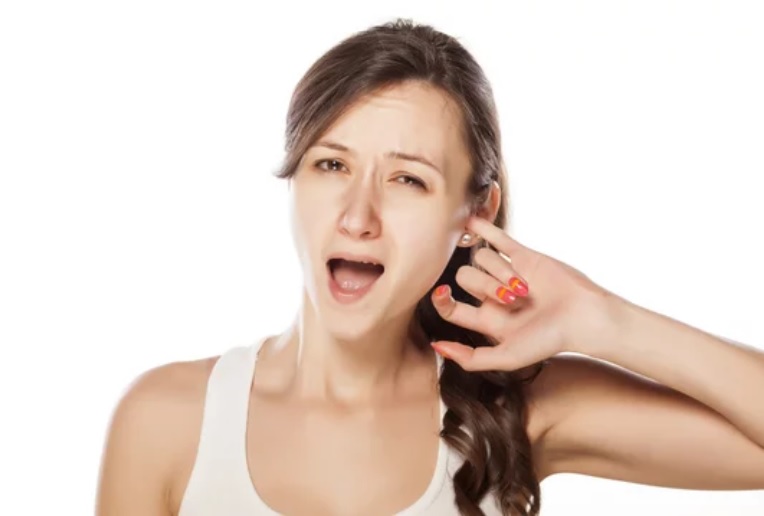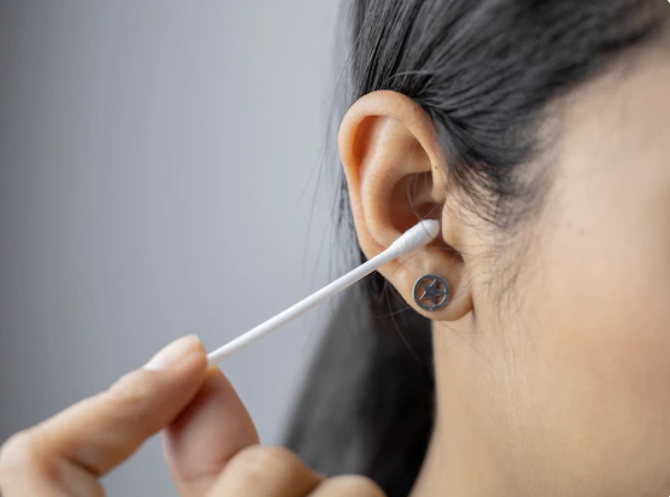INTRODUCTION || CAUSES || SYMPTOMS || TREATMENT || PREVENTION || TAKE AWAY
INTRODUCTION:-
An outer ear infection is an infection of the outer opening of the ear and the ear canal, which connects the outside of the ear to the eardrum. This type of infection is medically known as otitis externa.
It’s common in children, teens, and adults who spend a lot of time swimming. Thus, it is called a swimmer’s ear or otitis externa, an infection in the outer ear.
CAUSES of Swimmer’s ear / Otitis Externa:-
Causes of otitis externa or outer ear infection typically refer to the growth of bacteria or other
microorganisms.
The few things that will escort such bacteria and microorganisms to our outer ear are:
1) Swimming:
When we dive inside the waters, it does come in contact with our ears. At times the water might be dirty or stagnant with breeding microorganisms in it. So, this is when it irritates the outer linings of our ear and sticks there, causing an infection.

2) Injury:
An injury or a wound inside your ear in any form, be it pus, pustule, burn, cut, allergy or
any such thing that exposes the inner layer of skin to the air will attract a lot of bacteria
towards it, which can cause an infection.

3) Faulty practices:
Such injuries in our ears are caused due to faulty practices like scratching our ear
vigorously, excessive use of earphones and headphones that are harmful to the sensitive skin of our ears, or also using cotton buds that can lead to scratches in our outer ear.

4) Excessive cleaning of earwax:
Earwax is a naturally produced cerumen in our body that lubricates our outer ear and the ear drum. Its oily nature will prevent physical damage like scratches and rupture of the skin and eardrum of the ear. Apparently, with an intent to clean the extra ear wax, we tend to overdo it, which rips off all the essential quantity of ear wax. This cuts down the lubrication, because of which the outer ear becomes more prone to friction and injuries.

SYMPTOMS of Swimmer’s ear / Otitis Externa:-
Initially, all we can find are basic symptoms of any sort of infection, which is:-
— Inflammation
— Ear might be WARM to touch
— Pain in the ear (can vary but mostly SEVERE in intensity)
— Pus-filled pustules in the external ear canal
— White fluid spurts out from the pustules
— Itchy ear
— Hearing ability decreases compared to normal
— Ear fullness or heaviness
On advancement of otitis externa due to negligence, you can further site symptoms like:-
— The infection and pain from the outer ear spread to the inner ear, descending down to the throat and the entire face.
— Headache that heads towards fever
— Swollen lymph nodes due to excessive bacterial deposition and lack of immunity.
— Bleeding ear discharge
In extremely severe cases, the infection might advance to the bones and cartilages around the ear, commonly called MALIGNANT OTITIS EXTERNA, which will further call for symptoms like:-
— Severe ear pain and headache
— Fluid discharge from the ear
— Loss of balance of the head
— Protruding bones in the ear
— Loss of hearing
— Ringing sound heard from the inside of the ear.
TREATMENT of Swimmer’s ear / Otitis Externa:-
— Eardrops or topical antibiotics:-
Since otitis externa is a superficial outer ear infection, it is expected to heal naturally just like how a common cut or burn would. But, if the infection fails to get suppressed by our natural body immunity, then certain oral antibiotics or antibiotic ear drops are recommended by the ENT doctor. These drops are usually administered two times a day for a period of 7 to 10 days.
Some of the recommended ones are Polymyxin B, Neomycin, Ofloxacin, Ciprofloxacin, and so on. Eardrops thus come under the first line of treatment.
Having said that, the type of eardrops prescribed may vary from person to person depending on the kind of microorganism that is causing the infection.
Here, the kinds of microorganisms means, it can be bacteria, fungi, viruses, and so on. So, if you are diabetic or an immune-compromised patient, you are likely to be infected by a fungus, which is when antifungal eardrops that target specific fungi are recommended.
— Antibiotics:-
Here, oral antibiotics that could be prescribed by your doctor is ciprofloxacin. It helps to combat bacterial infection in the ear in severe cases and thus heals acute otitis externa.
— Steroids:-
Since the infection comes with a certain extent of inflammation as well, the eardrops that we used are mostly combined with steroids that help to reduce swelling.
Oral steroids like prednisone are given under proper guidance and regular tests in significantly fewer doses.
— Ichthammol glycerine (IG packs):-
They are glycerine liquids used to replicate the lost ear wax and lubricate the skin of the outer ear. It decreases the swelling of the ear canal and also fights the infection topically, especially when associated with microbial allergies and redness.
— Quadriderm packing of the Ear canal
This is again a topical cream applied on the infected areas of the outer ear to treat the infection and clear out the pus.
— Draining the pus inside the pustule:-
This is a surgical method performed by your doctor as the last option when the pustule tends to grow as big as it would block your ear passage itself. This is when the doctor would go for surgery wherein he would make a small incision in the pustule and drain out all the bacterial fluid. This will compress and dry the pustule, thereby clearing the ear passage.
— Painkillers:-
Once the infection and inflammation are treated, the pain automatically reduces, but until then, certain painkillers like ibuprofen or acetaminophen will help you combat the pain and irritation.
PREVENTION of Swimmer’s ear / Otitis Externa:-
Some preventive measures that can be incurred from the above-mentioned theory are:-
— Use a swimming cap that aptly covers your ears before diving into the pool.
— Use an oiled cotton ball or cushiony earplugs while washing your hair under the shower.
— Avoid using homely tools like pins or cotton buds to clean your ears because they eventually
form scratches in your ear
— Do not break the natural protective barrier of cerumen by excessive cleaning.
— Try to drain out the water that has entered your ear using various draining methods.
— Pat dry your ears and hair neatly.
Apart from the fact that most adults today face otitis externa, it is quite common in children as well.
The inbuilt structure of ears in children is such that the outer passage of the ear is very thin.
This makes it very difficult to drain out the entered water from such a narrow opening. Thus, most of the water stays inside, causing the growth of bacteria or any such microorganisms.
Symptoms that will alarm otitis externa in children are:-
— Frequently crying
— Being clumsy
— Crying on touching the ear
— Fluid discharge from the ear
— Fever
TAKE AWAY:-
If you happen to site otitis externa in adults or in children as per the symptoms, it is always
recommended seeking a doctor’s help.
THANK YOU
MEDICAL ADVICE DISCLAIMER:
This blog, including information, content, references, and opinions, is for informational purposes only.
The Author does not provide any medical advice on this platform.
Viewing, accessing, or reading this blog does not establish any doctor-patient relationship.
The information provided in this blog does not replace the services and opinions of a qualified medical professional who examines you and then prescribes medicines.
And if you have any questions of medical nature, please refer to your doctor or qualified medical personnel for evaluation and management at a clinic/hospital near you.
The content provided in this blog represents the Author’s own interpretation of research articles.
